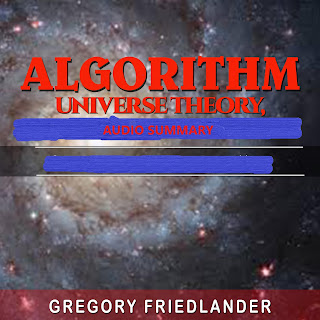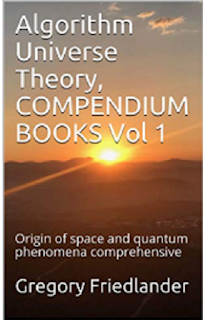The best argument against widespread acceptance of my irrefutable model is that it would make me impossible to live with.
Who wants to create another pompus windbag merely by putting amore accuate spin on spin theory.
All the up and down nonsense that you see, the colored quarks, the questions of origin and end are such blase things compared to the windbag of accuracy that I 'fart in your general direction.'
Ignorance is a small price to pay.
The bonus is that the editors can torture the upstart who would rewrite physics in a way both more accurate and more depressing. For AuT destroys all the beauty and art in the world in its specificity. Indeed, my very obnoxiousness is a function of the underlying forces which direct me without random randomness. I deartify, debeautify, and debauchify the world with my scientification, mathematicianism and explanoramus describifying.
Indeed, in my unromantification of the universe, I unsmartify my own geniusification.
If you read closeely the argument you had an idea of what is coming.
There are some really interesting features of the wave. The one I want to talk about today is the even exponent photons (t6) on the odd exponent s-like t7 construct.
What I ask you is whether this is coincidence or whether the wavelike structure of the t7, once assembled on the t8 or perhaps the continual alignment, as the t8 on 9, t9 on 10 leads to the structures we see as waves due to their mathematical look.
Footnote 3 Electromagnetic and weak forces
A
discussion of the “unmatched” weak and strong forces is worth examining. A discussion of their range is given above
and is considered adequate.
AuT does
not take a definitive approach in what type of loading and unloading is
responsible for these since there are several alternatives that are worth
considering, but all are structural, particle pre-time physics as opposed to
field theory physics.
When you
convert 16^32 ct5 states to base 10 you get 3.4x10^38.
The weak
force is 10^25 and can be theorized to roughly correspond to the electron
(10^13) structural component coming off of the 10^38 ct5 component consistent
with electron-proton loading along with neutrons on the ct5 information arms.
The scale
of the electromagnetic force at 10^36 is only a factor of 100 off from the ct5
information arm loading (10^38). The
photon, theorized at 10^6 is a candidate, especially in light of the photo-electric
effect; but the suggestion is that the resulting effect would be closer to 10^32. One could use the ct4-t2 state to get this
scale and perhaps that figures into the analysis. What does appear clear is that
electro-magnetism as it is “measured” as opposed to how it exists in a quantum
state free of ct5 effects are two different features.
The observed
role in electro-magnetism (and spew) of the pre-photon, the magnetic part of
the equation in the standard model, suggests that the correct number would relate
to the interaction between the ct3 component (scaled 1:10^16 with the neutron)
which does not yield a satisfactory result.
There is
also the relationship of the ct3 prephoton with the photon (6) or electron
(10^13) which would make it more like the gravitational force than the ct5 arm
loading observed.
Perhaps part
of the explanation lies in the relative “size” of the features. In AuT folding, one result is that the
electron is “larger” than the proton even though the proton has more mass
because of the increase in compression from t-6 to t-16. For the same reason, the t16 proton is larger
than the ct4(16) neutron. This is why a core
of multiple black holes with 16^32 neutrons worth of information appears
smaller than the surrounding galaxy which might have less information.
The
function of the electron and black hole can be compared. What does appear likely based on a fractal
analysis is that the neutron “absorbs” ct1 and spews prephoton ct3 which when
rotated yields an electromagnetic field observed on earth and very important to
life on earth; just as a black hole, operating on a larger scale, absorbs ct1
and spews plasma thick photons.
Footnote 4 Gravity

The
simplest and first step in compression is the creation of the first dimension
and gravity. There is a lot in this
simple picture which shows the creation of gravity. The breakdown is dark
energy and movement. This is the one
state where a simple hinge to compression state ratio may be mathematically
derived as 256:27 using the sin equation for the numerator of pi going from -1
(the base number in the fpix equation) to 1 (the solution for n=0 in the fpix
solution).
The only place
where we see hinge states with mathematical certainty is at the -1 to 1
transition. This simple transition gets
more complex as dimensions are added. To understand this, imagine that the
number of places for pi corresponds to the amount of information involved. Hence, for pi at the -1 and 1 stage, the
denominator is essentially a single, non-dimensional place.
This model does not
have infinite series, so there are a specific number of places for the
denominator of pi. For neutrons, it
would be 10^16 places (or 4.3x10^24 if ct1 is the operational feature) and for
a black hole it would be 16^32 places.
Hence the solution for pi we use varies between the neutron, the atomic
state, the molecular state and the black hole.
One feature of the
model which is interesting is how it goes towards explaining why the universe
is not filled with light and by the same logic why it is not filled with
gravity. If light existed for all of
time, if gravity did, then it would eventually fill the universe. Both have a lifespan, however long, tied to
fpix compression and decompression due to changing values.






No comments:
Post a Comment